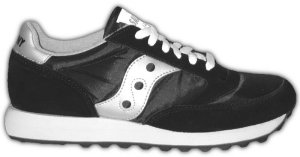
For those who have asked, I Just Did It: bought about $1000 of adidas Group (made enough to buy almost any pair of sneakers they sell) and about $1000 of Nike (made enough to buy five pairs of Chucks). On the other hand, but if you want to buy stock to make money: also consider Boeing, Dr Pepper Snapple Group, or EADS NV.
There are a number of athletic shoe companies (as indicated by their Standard Industrial Codes) that are represented in the various stock markets in the United States (NASDAQ, NYSE, or the "over the counter" market).
In 1999, athletic shoe companies have been either big winners or big losers. None of them have had a change less than 20% over the year.

![]() Saucony, Inc. was the big winner in 1998 as well as 1999. Saucony Class A stock went up a surprising 92.9% during 1999. NOTE: Historical interest only; Saucony is now a division of Stride Rite.
Saucony, Inc. was the big winner in 1998 as well as 1999. Saucony Class A stock went up a surprising 92.9% during 1999. NOTE: Historical interest only; Saucony is now a division of Stride Rite.
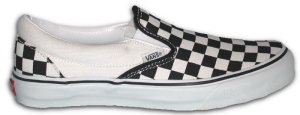
![]() VANS stockholders finished in the black, with a 78.2% gain during the year. (NOTE: VANS is now owned by VF Corporation, a major apparel maker.)
VANS stockholders finished in the black, with a 78.2% gain during the year. (NOTE: VANS is now owned by VF Corporation, a major apparel maker.)
Global Sports, Inc., former owner of the Ryka brand, went up by 75.2% during the calendar year 1999. However, they left the athletic shoe business during calendar year 2000 to become an order fulfillment house. Global Sports, now known as GSI Commerce, handles Internet orders for a number of brick and mortar retailers.

![]() FILA stock rebounded almost as well as Grant Hill, going up 45.0% during the year...
but the FILA ADR is no longer traded.
FILA stock rebounded almost as well as Grant Hill, going up 45.0% during the year...
but the FILA ADR is no longer traded.
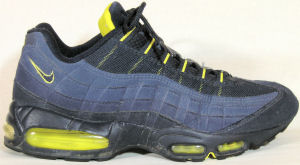
![]() During 1999, Nike investors weren't too blue. They had a 21.4% price increase over the year.
During 1999, Nike investors weren't too blue. They had a 21.4% price increase over the year.
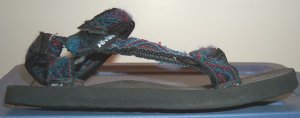
![]() The stock of Deckers Outdoor Corporation, makers of the Teva sport sandal, floated along with the winners. It went up 20% over the year.
The stock of Deckers Outdoor Corporation, makers of the Teva sport sandal, floated along with the winners. It went up 20% over the year.
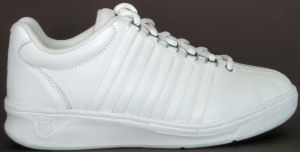
![]() If you have to be a loser, don't lose as much as your competitors. K-Swiss, Inc. went down by 30.2% during the year.
If you have to be a loser, don't lose as much as your competitors. K-Swiss, Inc. went down by 30.2% during the year.
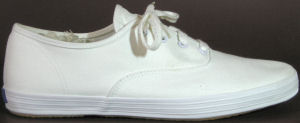
![]() Stride Rite, maker of the Keds brand, lost out with a 34.1% price decrease.
Stride Rite, maker of the Keds brand, lost out with a 34.1% price decrease.
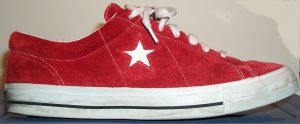
![]() Red seems to be the Converse color in the stock market, except for a fantastic performance during 1996. Converse stock lost another 42.1% over the year. As of March 2000, Converse went from the New York Stock Exchange to the "over the counter" market... and now, Converse is a division of
Nike.
Red seems to be the Converse color in the stock market, except for a fantastic performance during 1996. Converse stock lost another 42.1% over the year. As of March 2000, Converse went from the New York Stock Exchange to the "over the counter" market... and now, Converse is a division of
Nike.
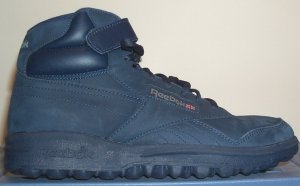
![]() Reebok shareholders were blue... with a 46.6% decrease during 1999. Only of historical interest, Reebok is now owned by adidas.
Reebok shareholders were blue... with a 46.6% decrease during 1999. Only of historical interest, Reebok is now owned by adidas.
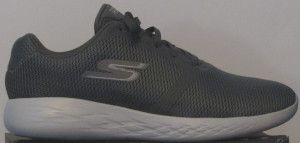
![]() Skechers USA - doesn't have a full year of data, so no comparisons.
Skechers USA - doesn't have a full year of data, so no comparisons.
![]() Continue onward to
2000's results...
Continue onward to
2000's results...
![]() Back to "Charlie's Sneaker
Pages!"
Back to "Charlie's Sneaker
Pages!"
Last Updated: 9 December 2018
Click here to send E-mail to Charlie.
Charlie's Sneaker Pages copyright 1995-2024 by Charles L. Perrin.
READERS PLEASE NOTE: Names of athletic shoe manufacturers, shoe styles, and technologies may be trademarked by the manufacturers. Charlie's Sneaker Pages uses these names solely to describe the shoes with the same familiar nomenclature used by the manufacturer and recognized by the reader.